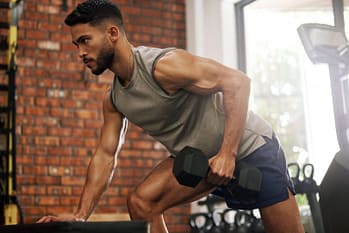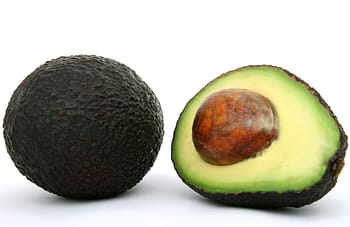Experiencing muscle soreness, irritability, or fatigue after a strenuous workout at the gym is a quite common problem. But how can you dodge all this post-workout fatigue and stay fit and active after your workout?
Post-Workout recovery is the most crucial time for all fitness lovers! This is the time when you make or break your body.
Recovery after a vigorous workout is as important as the exercise itself. Let’s learn more about post-workout recovery and how you can reverse the effects of the workout.
What is Post-Workout Recovery?
Post-Workout Recovery is the state when homeostasis of many physiological systems of the human body is restored. For instance, the
- Fuel and fluids consumed during workouts are replenished
- Cardiovascular function and body temperature are restored
- Damaged and worn-out tissues are repaired
- Muscle recovery is initiated to compensate for the wear and tear that occurred during the workout
Revealing The Secrets To Post-Workout Recover Speedily!
Obviously, that 1 hour of a tough workout is worth it, but the other 23 hours are equally important. Your body needs to recover completely before the next workout session.
This recovery routine includes proper rest and some other tasks too. So, get ready to bounce back faster by following these tips post-workout.
1. Drink Plenty of Water
Staying hydrated before, during, and after a workout is key to recovery. Without drinking enough water, your body won’t be able to come back to the pre-workout state.
Drinking plenty of water post-workout regulates the body temperature, carries nutrients and oxygen to body cells, stabilizes the heartbeat, and normalizes the fluctuating blood pressure.
The intake of 1 cup of water, i.e., about 236 ml, is recommended every 15 minutes pre- and post-workout and during exercises.
2. Eat Healthy Diet
During high-intensity workouts, the glycogen and proteins in our muscles are usually utilized by the body. And definitely, both of these things need to be back in the muscles before the next session.
Post-workout nutrition holds equal importance as pre-workout one. Because the recovery rate greatly depends on what nutrients and vitamins you eat after the exercise.
Consider eating a high-protein meal to replenish the lost protein stores. Food such as eggs, chicken, salmon, fatty fish, yogurt, and protein shakes are great options to eat after a workout.

Complex carbs are also equally essential. Oatmeal, sweet potatoes, whole wheat bread, and pasta can be consumed paired with a protein and healthy fat source.
You can add healthy fats like avocado, olives, seeds, nuts, and olive oil.
Consuming an adequate amount of;
- Protein provides amino acids to the body needed to build new muscle proteins and repair the previous ones.
- Carbs stimulate insulin production that promotes glycogen synthesis.
3. Get Proper Sleep
Sleep deprivation can harm the body’s strength, endurance, and cognitive function. You definitely have to bring your body back to the pre-recovery state.
Sleep is a crucial step to maximizing recovery that most people don’t pay attention to. Your worn-out body really needs to rest and relax. Getting good sleep will allow your body to repair damaged tissues. Also, testosterone and human growth hormone levels increase during sleep, allowing you to perform better in the next workout session.
Sleeping for at least 7 to 8 hours every night can maximize recovery. Also, you can take a little 10 to 15 minutes of a nap after a workout.
4. Take Ice Bath
People believe that taking hot showers can relax their bodies. An ice bath may seem painful, but luckily it has proven beneficial effects. Taking an ice bath can relax your aching and sore muscles, reduces stress and anxiety, boost your circulation and mood, and enhances your post-workout recovery.
Immerse in an ice bathtub of 10 to 15 degree Celsius temperature. To avoid hypothermia or frostbite, stay in it only for 10 to 15 minutes. Also, sports trainers recommend getting into an ice bath right after the workout to promote the recovery process.
5. Get Massage
Delayed Onset Muscle Soreness (DOMS) is one of the most common symptoms you face after a tough workout. It can hinder your motivation for the next session. So to improve that, massage is an effective therapy.
The immense benefits of massage therapy include kicking out muscle soreness, improving joint mobility, enhancing blood circulation, reducing post-workout inflammation, and pain relief. Thus overall increment in the speed of recovery.
You can choose to get any massage, from Swedish massage, Thai massage, sports massage, etc. it is recommended to get into massage right after the workout. The duration should be between 20 to 60 minutes.
Concluding Remarks!
The sooner and better you recover, the better it will be to reach your fitness goals. And for an exceptional recovery, you must follow the tips mentioned above and gain good results.
- Dupuy, O., Douzi, W., Theurot, D., Bosquet, L., & Dugué, B. (2018). An evidence-based approach for choosing post-exercise recovery techniques to reduce markers of muscle damage, soreness, fatigue, and inflammation: a systematic review with meta-analysis. Frontiers in physiology, 403.
- Backes, T. P., & Fitzgerald, K. (2016). Fluid consumption, exercise, and cognitive performance. Biology of sport, 33(3), 291-296.
- Biolo, G., Tipton, K. D., Klein, S., & Wolfe, R. R. (1997). An abundant supply of amino acids enhances the metabolic effect of exercise on muscle protein. American Journal of Physiology-Endocrinology And Metabolism, 273(1), E122-E129.
- Poole, C., Wilborn, C., Taylor, L., & Kerksick, C. (2010). The role of post-exercise nutrient administration on muscle protein synthesis and glycogen synthesis. Journal of sports science & medicine, 9(3), 354.
- Vitale, K. C., Owens, R., Hopkins, S. R., & Malhotra, A. (2019). Sleep hygiene for optimizing recovery in athletes: review and recommendations. International journal of sports medicine, 40(08), 535-543.
- Lateef, F. (2010). Post exercise ice water immersion: Is it a form of active recovery?. Journal of Emergencies, Trauma and Shock, 3(3), 302.
- Sriwongtong, M., Goldman, J., Kobayashi, Y., & Gottschalk, A. W. (2020). Does Massage Help Athletes After Exercise?. The Ochsner Journal, 20(2), 121.



